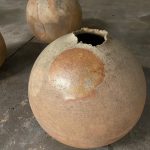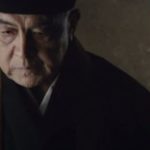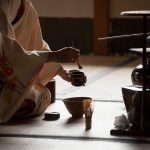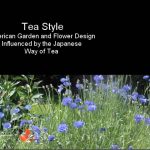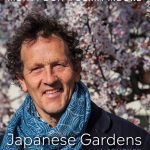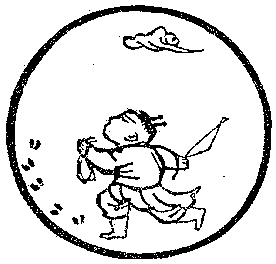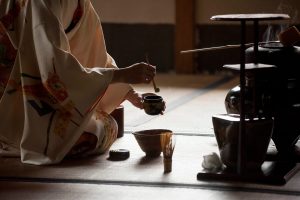 Many people are surprised to find that Chanoyu, the Japanese tea ceremony, is not a ceremony at all. Chanoyu literally means “hot water for tea” and is a Zen art. Its four hundred year history is filled with stories of Zen personalities and Tea masters whose practice illuminates the Way of “everyday life”.
Many people are surprised to find that Chanoyu, the Japanese tea ceremony, is not a ceremony at all. Chanoyu literally means “hot water for tea” and is a Zen art. Its four hundred year history is filled with stories of Zen personalities and Tea masters whose practice illuminates the Way of “everyday life”.
The serene atmosphere of the tearoom resembles a zendo. It’s an empty room that is swept clean everyday and specially decorated for each occasion. The water simmers in a kettle over the sunken hearth and sounds like wind in the pines. Seasonal flowers, set in an alcove of shadow and light, are arranged as though growing wild in a field.
The most important object in the tearoom is the scroll, which like the flowers, change with each occasion. The words are usually taken from a Zen saying. Today the scroll reads, “The color of the mountains purifies the pure body.” The calligraphy is by a Zen Roshi and his personality can be felt in the direct meeting of spirit and ink on paper. These simple yet mysterious words linger throughout the gathering as the host makes a fire in the sunken hearth and serves a light meal before tea.

Tea gatherings can be held for any occasion. They can be short and abbreviated with only a bowl of tea and a sweet or more elaborate with a full seven course Kaiseki meal. The food for a Kaiseki meal is always the freshest available from local sources. Although Kaiseki food is considered Japan’s haute cuisine, and finds its admirers among modern French chefs particularly in California, at its heart it is very simple.
Kaiseki means “hot stone” and refers to the heated stone Zen monks used to wrap against their stomachs to keep from getting hungry during long hours of meditation. The portions of a Kaiseki meal are just enough to satisfy the guests before tea. The food is light, very much like nouvelle cuisine. Presentation is important, but most important is the pure fresh flavor of the seasonal ingredients.
Hot soup, rice, grilled fish and pickles are served on black lacquer trays and ceramic dishes. Each course is punctuated with servings of hot sake in thimble sized cups. In the quiet moments after the meal when the conversation pauses, the host pours hot water into the tea bowl and whisks the green powdered tea. The guests are drawn into an atmosphere tranquility.
“The color of the mountains purifies the pure body.” The words of the scroll season the taste of the food and tea. In the midst of simplicity the hosts sincerity is revealed. The interaction between host and guest is more important than elaborate food and luxurious serving dishes.
It is said that “If the goodwill of the host is wholehearted, even a bowl of rice will seem delicious to the guest.” This is true all over the world when friends gather to share a meal or a bowl of tea. The long evenings of winter are spent by the fire with close friends, warm food, and drink. The tea room, garden paths, steps, and waiting area are lit by candles and lanterns and there is a large fire in the hearth. Deep serving dishes hold the warmth of the food.

